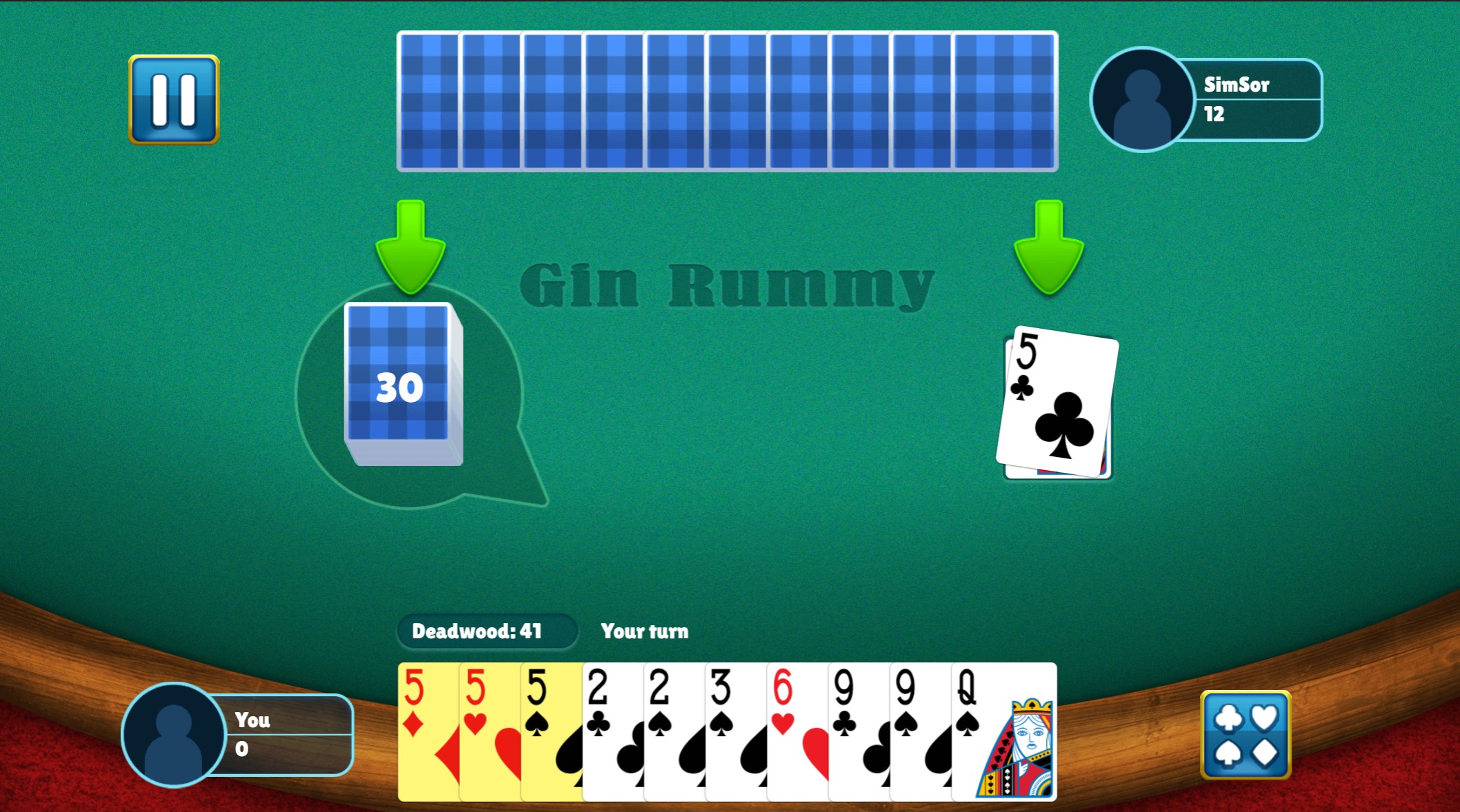Gin Rummy Rules Explained
The aim of Gin Rummy is to form valid combinations of cards while minimizing the value of ungrouped cards in your hand. The game is played between two players. The first to reach a predetermined score, usually 100 points, wins.
Setup
Each player is dealt ten cards. The remaining cards form a face-down draw pile. The top card from the draw pile is placed face-up next to it to begin the discard pile. The non-dealer has the first choice to either pick up the face-up card or pass. If they pass, the dealer gets the same choice. After this, play continues in alternating turns.

Gameplay
On your turn, you must draw one card. You may draw either the top card of the draw pile or the top card of the discard pile. Then, you must discard one card to end your turn. Your hand always consists of ten cards after discarding.
The goal during play is to form melds. These are either sets of three or four cards of the same rank in different suits, or runs of three or more cards in sequence of the same suit. Any cards that do not belong to a meld are considered deadwood. Each card has a value: face cards are worth ten points, aces are worth one, and all other cards are worth their numeric value.
Knocking
If your deadwood totals ten points or fewer, you may choose to knock, ending the round. You then lay your hand face-up, showing your melds and deadwood. Your opponent also reveals their hand and may lay off their unmatched cards by adding them to your melds, if possible.
If your deadwood is lower than your opponent’s after knock adjustments, you earn the difference in points. If your opponent’s deadwood is equal to or less than yours, they receive the difference instead, along with a bonus of twenty-five points. This situation is called an undercut.
Going Gin
If you manage to meld all ten cards, leaving no deadwood, you declare Gin. You reveal your hand and your opponent is not allowed to lay off any cards. You score a twenty-five-point bonus, plus the full value of your opponent’s deadwood.
Ending the Game
The game continues in rounds. After each round, points are tallied and added to each player's total score. The first player to reach the agreed target score, often 100, wins the match.



